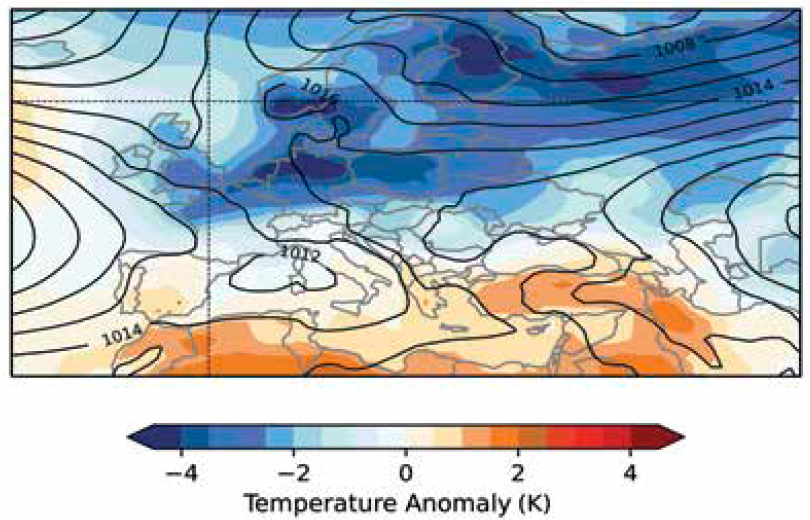How Weather Regimes Influence Cold Dark Wind Lulls in Future Power Systems

More and more countries have committed to becoming climate neutral over the next few decades. Many have decided to base their energy systems around renewable sources thanks to their fast-sinking costs. However, if they rely on wind and solar for their power generation, these countries need to have a plan for the multi-day periods when the wind barely blows and the sun rarely shines. To this end, Tom Brown and Christian Grams joinec their expertise to understand of how these dark wind lulls ("Dunkelflauten") relate to long-lasting continental-scale weather regimes. This knowledge could help power system operators to better predict and mitigate these conditions.
Tom Brown builds computer models of the future energy system. He had identified dark wind lulls as one of the leading causes of high costs in scenarios with high shares of wind and solar energy, particularly when low temperatures lead to higher heating demand. Batteries can store energy for several hours but are not sufficient for the many days of storage required in the European winter.
Christian Grams, as a meteorologist studying weather regimes, was interested how the regimes could be related to these periods of high stress for the energy system. Weather regimes describe the dominant weather patterns over Europe and are classified into seven major groups, each with different properties affecting pressure, temperature and precipitation. Mapping weather regimes to dark wind lulls could unlock a better understanding of their underlying causes.
To tackle this issue, Tom and Christian teamed up with their group members Fabian Neumann and Julian Quinting. Within this team constellation, physics student assistant Fabian Mockert, funded by a YIN Networking Grant, was able to show that three of the seven weather regimes dominated the periods with dark wind lulls relevant for the German power system. They all correspond to ‘blocked’ (anticyclonic) situations but with different locations of the blocking high pressure systems: one has a high pressure system centered over Germany, while the other two situations correspond to a pressure saddle point over Germany between high and low pressure systems.
All three cause low wind speeds over the North and Baltic Seas, which is the driving factor causing the dark wind lulls. One regime in particular coincided with cold spells (see figure). These results are being written up into a scientific publication and will serve as the basis for a project application to explore how climate change affects the relation between weather regimes and the power system.

